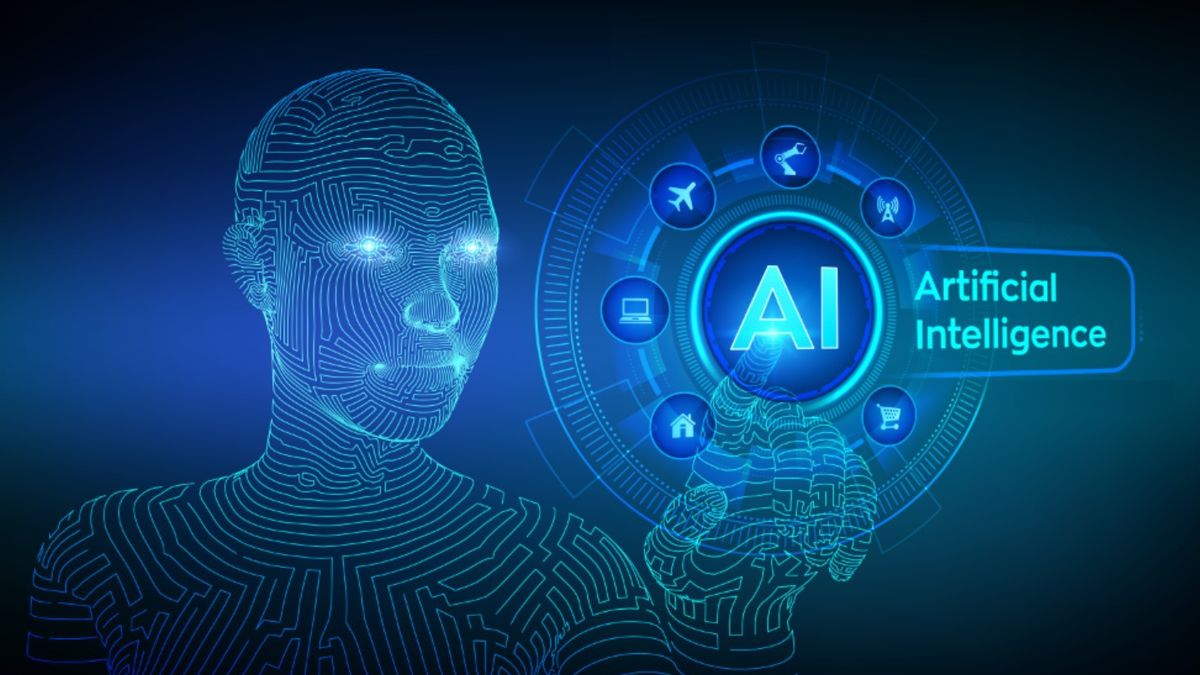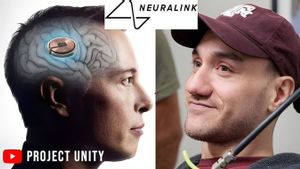JAKARTA In recent years, the term Artificial Intelligence (AI) has become increasingly widely used in various topics of discussion. This coincides with the increasing role of technology in industry and the emergence of OpenAI with its Dall-E and ChatGPT. Although AI is very much needed to help humans. However, not everyone understands the understanding and history of Artificial Intelligence.
On the other hand, the concept of artificial intelligence has emerged more than a decade ago. In 2004, a computer scientist and American cognitive scientist born September 4, 1927, John McCarthy has explained the definition of AI in his paper.
Understanding Artificial Intelligence
According to McCarthy, Artificial Intelligence is the science and engineering to create intelligent machines, especially intelligent computer programs. This is related to the same task of using computers to understand human intelligence, but AI doesn't have to limit itself to biologically observable methods.
Long before John McCarthy, computer scientist and mathematician Alan Turing had discussed the concept of artificial intelligence. In his paper entitled Computing Machinery and Intelligence, published in 1950, Turing asked a question "Thinking machine?".
From that question, the Father of Computer Science outlines a test that is now known as Turing Test. Turing describes a human interogator as trying to distinguish between computers and human text responses. Turing Test is an important part of AI history as well as an ongoing concept in philosophy because it uses ideas around linguistics, as reported by IBM.
Artificial Intelligence Goals
Experts then continued their investigation into Artificial Intelligence potential as did Stuart Russell and Peter Norvig. The book, written by the two, Artificial Intelligence: A Modern Approach, has become a leading reference book in today's AI study.
Russell and Norvig identified the potential for artificial intelligence that distinguishes it from today's computer system. According to the book, AI will lead to the ability to think as humans do. Both recorded several AI potentials, namely, being a system that thinks like humans and systems that act like humans.
But before leading to that, the two experts offered a more ideal and specific approach solution, namely to become a system that thinks and acts rationally. In AI coverage, there are sub-fields called machine learning (ML) and deep learning (DL) to process and study data.
Simply put, AI which is a combination of computer science and a strong collection of data is intended to help solve human problems.
Artificial Intelligence History
In fact, early ideas about machines that could think' have emerged long before 2000. Starting from ideas, then experiments, then development, AI has experienced rapid evolution in this century.
The following is the history of Artificial Intelligence, a number of important events that lead to the emergence of AI.
In 1950, computer science father Alan Turing published a paper entitled Computing Machinery and Intelligence. In his work, Turing explained creating Turing Tests to test and determine whether computers can show the same intelligence as humans.
Then in 1956, John McCarthy defined artificial intelligence in the first AI conference held at Dartmouth College. In the same year, other computer scientists such as Allen Newel, JC Shaw, and Herbert Simon created the first artificial intelligence software program, Logic Theorerist.
Frank Rosenblatt, a well-known psychologist in the field of deep learning Artificial Intelligence developed the first computer based on a neural network called Mark 1 Perceptron in 1967. Still in the same year, US cognitive scientists in the field of artificial intelligence,
The year 1980 marks using a Backprogation algorithm that can train itself. This will be widely used in the application of Artificial Intelligence. For information, Backpropagation is a machine learning algorithm used in neural network training. It works by repropagating errors from neural network output back to input, through multiple layers of the network, thus updating weights and biases in the network.
Human Machine Competition
Incidents related to AI also shocked humans in 1997. At that time Deep Blue, an artificial intelligence (AI) system developed by IBM, managed to beat the world chess champion, Grandmaster Garry Kasparov, in a series of human chess games vs machines.
Deep Blue uses a negamax search algorithm that allows machines to perform rapid analysis and make accurate decisions. Deep Blue combines parallel processing techniques with heuristic algorithms and chess strategies to make game decisions. The system has the ability to process millions of potential chess steps in less than a second.
Then the engine match against humans took place again in 2011, IBM Watson's artificial intelligence system, successfully demonstrating its analytical and natural language processing capabilities by answering questions in diverse categories in the Jeopardy match! against champions Ken total and Brad Rutter. IBM Watson is the winner.
Jeopardy! is a very difficult task for AI systems because it requires the ability to understand natural languages and solve complex problems. However, IBM Watson successfully fulfilled the task and showed that AI was able to overcome very complex tasks and provide accurate solutions. This event marked changes in the AI sector and paved the way for the development of more sophisticated and useful AI technologies in various fields.
In 2015, Baidu introduced their newest supercomputer, Minwa, which uses convolution neural network technology to identify and categorize images with higher accuracy than humans in general.
The following year, DeepMind's AlphaGo program, backed by an inner neural network, managed to beat world champion Go, Lee Sodol, in a five-match match. This is a very significant achievement, given the many possible steps that can be taken during the game (more than 14.5 trillion steps in just four games!). In the end, Google bought DeepMind at a price of 400 million US dollars.
With the development of AI technology and deep neural networks, innovations such as Minwa and AlphaGo pave the way for the development of a more sophisticated and useful AI system in the future. That is the meaning of Artificial Intelligence, its goals and history!
The English, Chinese, Japanese, Arabic, and French versions are automatically generated by the AI. So there may still be inaccuracies in translating, please always see Indonesian as our main language. (system supported by DigitalSiber.id)













